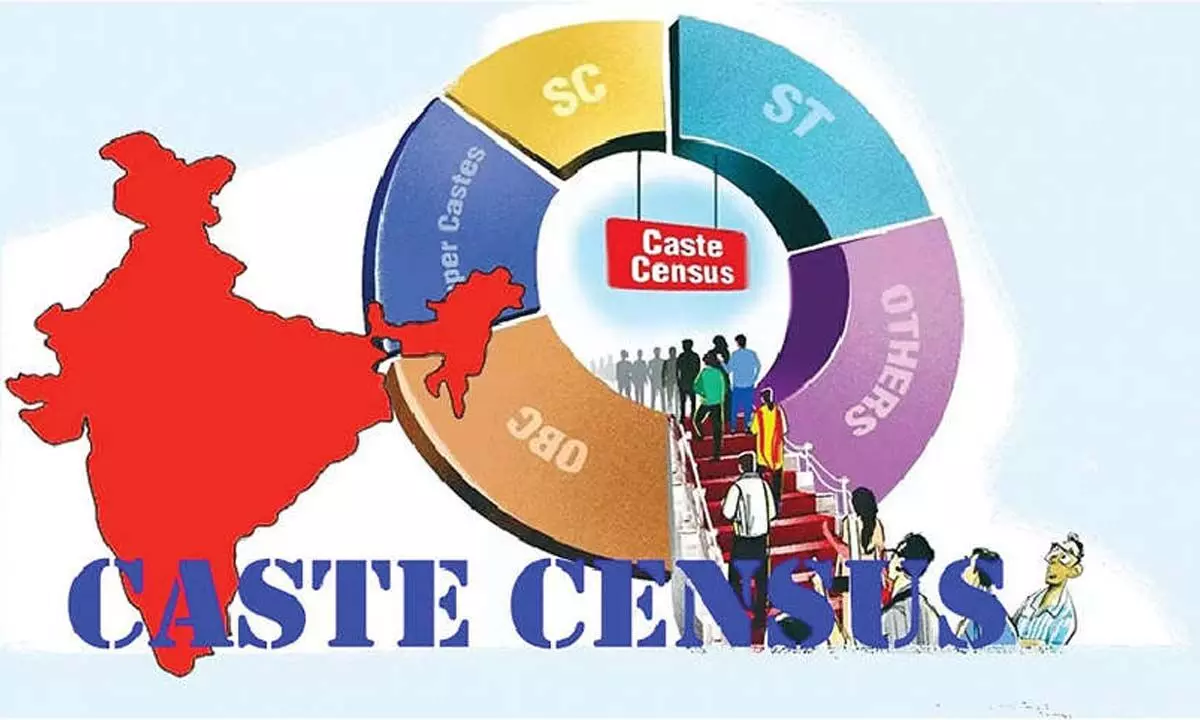
26-Jun-2025 02:00 PM
The Census of India is one of the largest administrative exercises globally and serves as the backbone of policymaking, planning, and welfare targeting. Traditionally, India has steered clear of caste enumeration—except for Scheduled Castes (SCs) and Scheduled Tribes (STs)—due to political sensitivities and methodological concerns.
However, with Prime Minister Narendra Modi’s recent announcement to include caste data in the next Census, a national conversation has begun. The government believes such data can help bring the marginalised into the mainstream and promote inclusive governance.
The Indian Census is carried out in two phases:
House Listing Phase: This includes details about buildings, household ownership, water access, and sanitation.
Population Enumeration Phase: Conducted usually a few months later, it includes demographic details such as age, sex, language, religion, and caste (only SC/ST so far).
In the upcoming Census, caste enumeration is being considered as part of the house listing phase itself.
While the Census is an extraordinary exercise, its structure and outdated questions often limit its usefulness:
Lack of updated caste data: The last caste census (Socio-Economic and Caste Census – SECC) was conducted in 2011 but is not publicly available for policymaking.
No data on OBCs: There is no authoritative count of Other Backward Classes (OBCs), despite them being a major beneficiary group in welfare schemes.
Incomplete economic data: Questions related to occupation, income, and employment are insufficient or inaccurate.
This makes it difficult to plan for affirmative action, welfare targeting, and the design of inclusive programs.
Welfare Planning: Without knowing how many people belong to each caste, it's hard to distribute welfare resources proportionally or design affirmative action fairly.
Data-Driven Development: Targeted data can improve policymaking for marginalised groups.
Reducing Discrimination: Accurate caste data can help expose systemic inequalities in areas like employment, education, and land ownership.
Moreover, caste data is already used informally by political parties during elections, but without reliable figures, it often remains anecdotal.
The article argues that it’s not just about whether caste should be counted—but how it should be counted.
The current method (collecting data at the household level) has limitations:
It does not always accurately reflect intra-household inequalities.
It lacks flexibility to adapt to modern, urban realities like rented accommodation, nuclear families, and shared living spaces.
Incomplete or biased data can skew policy decisions for years.
Hence, experts suggest that caste should be recorded individually, with the help of technology and trained enumerators.
To improve the Census and caste enumeration:
Remove unnecessary or outdated questions like those on mobile phone ownership or "main cereal consumed."
Include granular caste data, especially for OBCs, to ensure fair representation.
Ensure migration, urban deprivation, and housing quality are part of the survey.
Focus on living standards, access to toilets, cooking gas, and healthcare as more reliable indicators of poverty than income alone.
One major blind spot is urban poverty. Migrants and slum dwellers are often left out due to their transient housing or lack of documents.
Including questions about:
Rental housing
Living arrangements
Informal settlements
...can help reveal the hidden layers of deprivation in cities.
If properly designed, caste data from the 2021 Census (now expected in 2025) can:
Provide credible statistics for inclusive policies
Help restructure reservation policies
Enable better targeting of schemes like scholarships, housing, and food security
Empower states with localized caste data for better planning
This topic directly links to multiple areas of the UPSC syllabus:
GS Paper I: Indian Society, Social Issues
GS Paper II: Governance, Policy Implementation
GS Paper III: Inclusive Growth, Social Justice
Essay Paper: Topics on Caste, Census, Governance
1. Which caste groups are officially counted in the current Indian Census?
A. All castes
B. SCs and STs only
C. Only OBCs
D. None
✅ Answer: B
2. What was the last official attempt to collect caste data in India?
A. 1991 Census
B. 2001 NSSO Report
C. SECC 2011
D. NFHS 2019
✅ Answer: C
3. Why is there a need to reform the method of caste enumeration?
A. To increase revenue
B. To eliminate caste from society
C. To accurately capture marginalized sections and their conditions
D. To reduce Census time
✅ Answer: C
4. Which of the following is a limitation of the current household-level caste data collection?
A. Too expensive
B. Ignores gender equality
C. Cannot record mobile phone usage
D. Fails to reflect individual-level data in diverse urban settings
✅ Answer: D
5. Including caste in the Census helps in which of the following?
Better policy formulation
Efficient welfare targeting
Political campaigning
Market research
Select the correct code:
A. 1 and 2 only
B. 1, 2 and 3
C. 1, 3 and 4
D. All of the above
✅ Answer: A